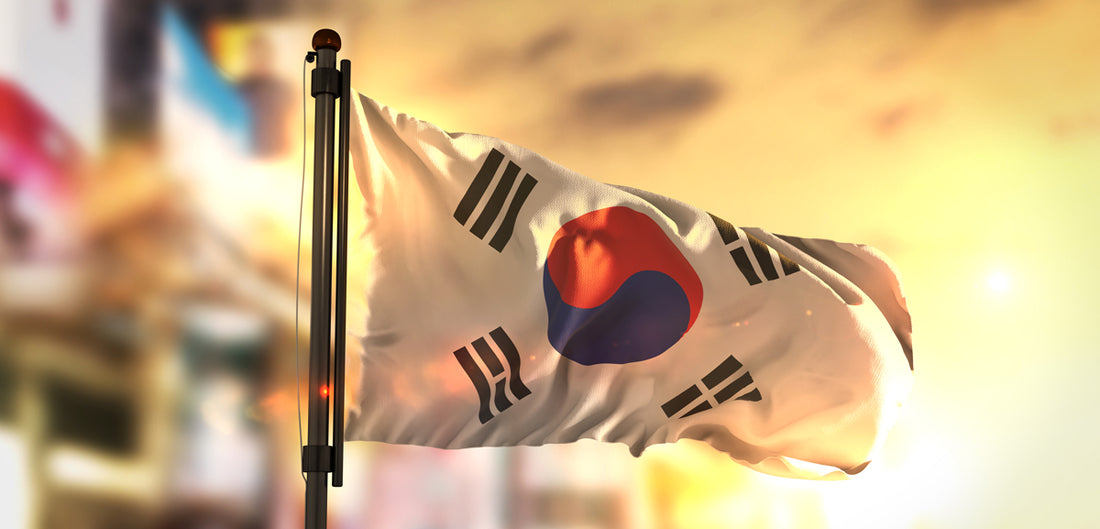The Hallyu Wave has rapidly expanded from its roots in the 1990’s, when K-pop and K-Dramas were words that were virtually unknown to the general public. Nowadays, you’ll be sure to meet a K-Pop or K-Drama fan anywhere you go. But have you ever wondered how this surge of interest in Korean culture took place? Look no further for an (interesting) history lesson!
The Rise of K-Dramas and Korean Movies
The rise of Korean dramas and movies started in the 2000’s, when the ban on Korean popular culture between Korea and other Asian countries (most notably Japan) was lifted, leading to a surge of interest in Korean dramas such as Truth [2000] or Life is Beautiful [2001]. Korean movies also enjoyed quite a bit of success internationally - The Host [2006] ,My Sassy Girl [2000] and Miracle in Cell No. 7 were very popular, especially amongst other Asian countries such as Hong Kong and Japan.
K-Dramas’ popularity only kept increasing as the years went by with hits such as Secret Garden (2010), Boys over Flowers (2009), and Dream High (2011). From the mid to late half of the 2010’s, Korea became a K-Drama powerhouse, churning out a long list of K-Dramas, included but not limited to : Reply 1998 (2015), Moonlight Drawn by Clouds (2016), Goblin 2017), Descendents of the Sun (2016), Strong Woman Do Bong-Soon (2017), What’s Wrong with Secretary Kim (2018), Sky Castle (2019), Hotel Del Luna (2019), Crash Landing On You (2020).. and so forth.
This sudden increase in Korean dramas can be attributed to the rise of the Internet and ransoming software, as well as Netflix, which made it easier for more people to access broadcasts that they had missed and re-watch them if desired. It goes without saying, but the chemistry between attractive and likeable actors and actresses, such as Son Ye Jin and Hyun Bin from the hit Netflix drama Crash Landing On You, definitely did not hurt the appeal of K-Dramas worldwide. Another large portion of what made K-Dramas more popular was the quality and plot, which evolved over the years as Korean screenwriters and cameramen developed the perfect techniques to keep avid K-Drama watchers click that nail-biting next episode at 1 a.m.

The Rise of K-Pop
Korean music too has grown in popularity alongside Korean movies and dramas since 2012, when the most the general public knew about K-Pop was Gangnam Style. For more information on the evolution of Korean music - well we have an entire article which can be accessed here. We’ve included a brief summary of Korean music and its origins below as well!
Although K-Pop as a genre has existed since the 1990’s with the boy band Seo Taeji and the Boys, K-Pop as a whole only really broke out as a short-lived trend internationally with Psy’s iconic hit “Gangnam Style” in 2012.
It would take a little more time for K-Pop to become world-renowned, and it really only became mainstream in 2017 with the rise of BTS - who recently on August 21 of 2020 released their hit single “Dynamite” and became the first K-Pop act to reach 100 million views. However, before BTS’ rise to popularity, there were also other groups - BIGBANG, 2NE1, EXO, TXVQ and F(x) between the 2000s and 2020s, who enjoyed (and are stll enjoying) a fair bit of success internationally and nationally. Notably, with the release of their Netflix Documentary, the girl group BlackPink will no doubt introduce K-Pop to audiences that may not have been too familiar with the music genre.
Some of the Most Popular Korean Food
Since its start many thousand years ago, Korean food has changed dramatically with many variants to suit the wants and needs of the people, and pretty much every single combination that has been created through this sort of trial and error tastes amazing. Although there’s too many delicious Korean dishes to count, some must-haves, especially if you were to ever visit Korea, would be Tteokbokki, Budaejigae, and Hotteok.
-
Tteokbokki
A chewy, spicy popular street food (for more on street food, click here), Tteokbokki is hailed as the ultimate Korean dish by many. With a boba or gnocchi-like texture and a spicy red sauce, this dish will blow you (and your stress) away. For South Koreans, Yeop-Tteok - an ultra spicy variation of the traditional Tteokbokki, with cheese and sausages, is as popular as pizza.
-
Budaejigae
When times are tough, people will eat anything to survive. One example would be Budaejigae, or “Army Soup” - invented during the wars that wracked Korea and left it without much food in the 20th century. Budaejigae is basically a soup filled with a mix of sausages, vegetables, kimchi and a pack of instant ramen noodles. Though the modern version is very tasty, the ones created during the war utilised all sorts of leftover scraps from the army.
-
Hotteok
There’s little that can go wrong with carbs and sugar. Hotteok is like the Korean version of cinnamon rolls or donuts, but better - in my personal opinion. It tastes like a cross between bread and pancake - which might confuse you. Making Hotteok is easy, as long as you have yeast - you simply put a nutty, sweet and slightly cinnamon-y paste between a yeasty dough you flatten it into a pancake, and its simplicity means that it’s a snack that’s enjoyed amongst pretty much everyone in Korea regardless of age.
The Rise (and History) of Korean Beauty
Korean skincare is the latest trend amongst teenagers, even amongst those who don’t know much about Korean dramas and K-Pop. Once limited to Korea, brands such as Olive Young and Etude House have become ubiquitous international brands thanks to social media and YouTube channels such as Pony Syndrome, a South Korean makeup artist who has amassed an impressive 6 million subscribers as of the time of writing.
Through influencers, social media and articles highlighting the "10-step Korean skincare routine" many people were introduced to how they could also get the amazing skin of many K-Pop and K-Drama stars. According to an article by vox.com, the regimen goes a bit like this:
- a balm or oil cleanser
- a foaming cleanser
- an exfoliant
- a toner
- an essence
- an ampoule or serum
- a sheet mask
- an eye cream
- a moisturizer
- and then either a thicker night cream or sleeping mask or an SPF
Furthermore, Korean skincare and cosmetics tend to be quite affordable and accessible through the internet. So, people from all walks of life have access to a wide array of Korean beauty products.
Technically speaking, Korean beauty and skincare dates back many thousands of years ago in the Three Kingdoms era - around 57B.C. Skincare back then was very different from the bottles filled with foaming cleansers that you’ll find today, but more natural. Ground mung beans, or “Jodu” was used to cleanse faces and ash was used to fill eyebrows in.
We hope you found our article interesting and informative. We love sharing knowledge about Korean culture and it's popularity worldwide. What are some of your favorite things about South Korean culture? Please feel free to comment below on some K-Culture, K-Pop, K-Drama, Korean cuisine and beauty information we may have missed.
Related Products
